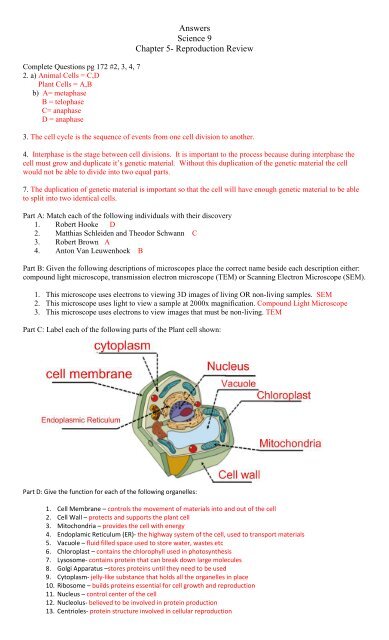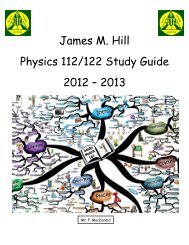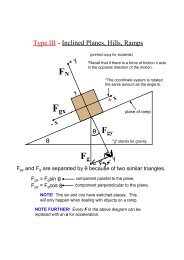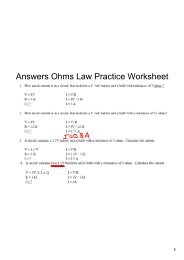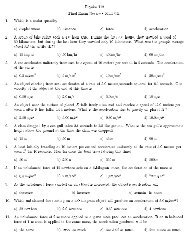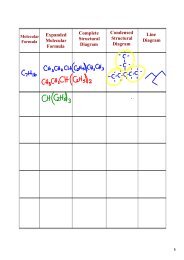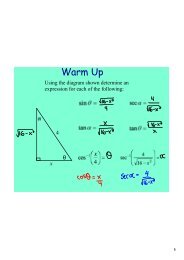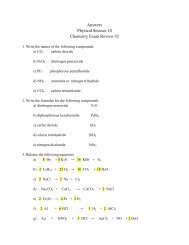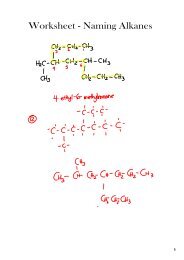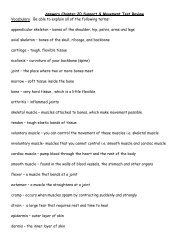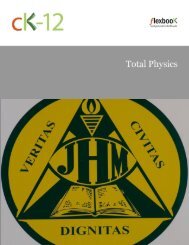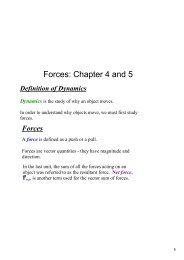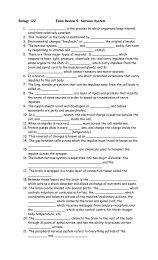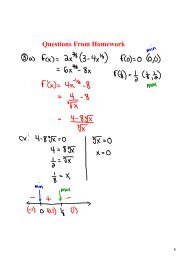Answers Science 9 Chapter 5- Reproduction Review
Answers Science 9 Chapter 5- Reproduction Review
Answers Science 9 Chapter 5- Reproduction Review
- No tags were found...
You also want an ePaper? Increase the reach of your titles
YUMPU automatically turns print PDFs into web optimized ePapers that Google loves.
Complete Questions pg 172 #2, 3, 4, 72. a) Animal Cells = C,DPlant Cells = A,Bb) A= metaphaseB = telophaseC= anaphaseD = anaphase<strong>Answers</strong><strong>Science</strong> 9<strong>Chapter</strong> 5- <strong>Reproduction</strong> <strong>Review</strong>3. The cell cycle is the sequence of events from one cell division to another.4. Interphase is the stage between cell divisions. It is important to the process because during interphase thecell must grow and duplicate it’s genetic material. Without this duplication of the genetic material the cellwould not be able to divide into two equal parts.7. The duplication of genetic material is important so that the cell will have enough genetic material to be ableto split into two identical cells.Part A: Match each of the following individuals with their discovery1. Robert Hooke D2. Matthias Schleiden and Theodor Schwann C3. Robert Brown A4. Anton Van Leuwenhoek BPart B: Given the following descriptions of microscopes place the correct name beside each description either:compound light microscope, transmission electron microscope (TEM) or Scanning Electron Microscope (SEM).1. This microscope uses electrons to viewing 3D images of living OR non-living samples. SEM2. This microscope uses light to view a sample at 2000x magnification. Compound Light Microscope3. This microscope uses electrons to view images that must be non-living. TEMPart C: Label each of the following parts of the Plant cell shown:Part D: Give the function for each of the following organelles:1. Cell Membrane – controls the movement of materials into and out of the cell2. Cell Wall – protects and supports the plant cell3. Mitochondria – provides the cell with energy4. Endoplamic Reticulum (ER)- the highway system of the cell, used to transport materials5. Vacuole – fluid filled space used to store water, wastes etc6. Chloroplast – contains the chlorophyll used in photosynthesis7. Lysosome- contains protein that can break down large molecules8. Golgi Apparatus –stores proteins until they need to be used9. Cytoplasm- jelly-like substance that holds all the organelles in place10. Ribosome – builds proteins essential for cell growth and reproduction11. Nucleus – control center of the cell12. Nucleolus- believed to be involved in protein production13. Centrioles- protein structure involved in cellular reproduction
Part E: Compare each of the following terms:1. Asexual and Sexual <strong>Reproduction</strong>- asexual reproduction involves one cell splitting into two identical cells andthere is no fertilization required. Sexual reproduction involves two cells fusing that have different geneticinformation and there must be a fertilization.2. Zygote and Daughter Cell – the zygote has different genetic information than the parent the daughter cell isidentical to the parent.3. Regeneration and fragmentation - regeneration occurs when a limb or other body part can re-grow ifremoved. Fragmentation involves the broken body part developing into a new organism.4. Budding and fragmentation- fragmentation occurs when a piece breaks off and then forms into a neworganism. Budding occurs when an outgrowth from the parent breaks off and becomes a new organismonce it has fallen off.Part G: State the three parts to the cell theory1. All cells come from pre-existing cells2. Cells are the basic units of life3. All living things are made up or one or more cellsPart F: Given the following diagram label the parts.Part I: Given each of the following descriptions name the type of asexual reproduction.a. A starfish loses its arm in a battle with another starfish, the arm then develops into a new starfishFragmentationb. A hydra plant produces an outgrowth and this outgrowth develops into a new hydra plant.Buddingc. A new tree begins to grow from a root of a nearby tree.Vegetative <strong>Reproduction</strong>d. Your bread begins to form mold on it after sitting on the counter for a couple of weeks.Spore Formatione. Bacteria reproducing at an alarming rate.Binary Fission


